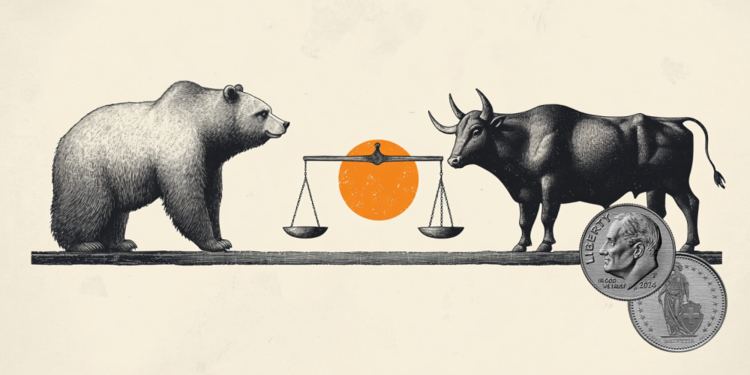- USD/CHF trades cautiously around 0.8200, while investors await key US NFP data for May.
- Disappointing US ADP Employment and ISM Services PMI data for May have battered the US Dollar.
- The Swiss CPI deflated by 0.1% in May, paving the way for more interest rate cuts from the SNB.
The USD/CHF pair trades with caution near the six-week low around 0.8200 during late Asian trading hours on Thursday. Investors brace for significant volatility in the pair as the United States (US) Nonfarm Payrolls (NFP) data takes centre stage, which will reflect the current status of the labor market.
The US Dollar (USD) fell sharply on Wednesday after the release of a string of disappointing US economic data for May, notably a sharp slowdown in the private sector labor demand. The ADP Employment Change data showed that the private sector added 37K fresh workers, the lowest reading seen since the Covid era in February 2021.
Additionally, weak Services PMI and rising input costs in the services sector, which accounts for the two-third of the overall economic activity, have prompted stagflation risks. According to the US ISM Services PMI report, activities in the sector unexpectedly declined, and the sub-component Prices Paid grew at a faster pace. The scenario of rising input costs and contraction in business activity often leads to stagflation.
On the trade front, investors seek fresh cues on trade negotiations between Washington and Beijing. On Wednesday, the comments from US President Donald Trump in a post on Truth.Social signaled that trade negotiations with Chinese leader Xi Jinping won’t be easy. “I like President Xi of China, always have, and always will, but he is VERY TOUGH, AND EXTREMELY HARD TO MAKE A DEAL WITH!!!” Trump wrote.
In the Swiss region, the scenario of deflation has raised expectations of an interest rate cut by the Swiss National Bank (SNB) in the monetary policy meeting on June 19. On Tuesday, the data showed that the Swiss Consumer Price Index (CPI) deflated by 0.1% on year, as expected, in May after remaining flat in April.
SNB President Martin Schlegel already warned in an event in Basel in the last week of May that Swiss inflation could enter negative territory, Reuters reported. However, he ruled out expectations that short-term inflation hiccups could lead to monetary policy adjustments, stating that the central bank is more focused on maintaining price stability in the medium term.
“Even negative inflation figures cannot be ruled out in the coming months,” Schlegel said and added, “The SNB does not necessarily have to react to this.”
US Dollar FAQs
The US Dollar (USD) is the official currency of the United States of America, and the ‘de facto’ currency of a significant number of other countries where it is found in circulation alongside local notes. It is the most heavily traded currency in the world, accounting for over 88% of all global foreign exchange turnover, or an average of $6.6 trillion in transactions per day, according to data from 2022.
Following the second world war, the USD took over from the British Pound as the world’s reserve currency. For most of its history, the US Dollar was backed by Gold, until the Bretton Woods Agreement in 1971 when the Gold Standard went away.
The most important single factor impacting on the value of the US Dollar is monetary policy, which is shaped by the Federal Reserve (Fed). The Fed has two mandates: to achieve price stability (control inflation) and foster full employment. Its primary tool to achieve these two goals is by adjusting interest rates.
When prices are rising too quickly and inflation is above the Fed’s 2% target, the Fed will raise rates, which helps the USD value. When inflation falls below 2% or the Unemployment Rate is too high, the Fed may lower interest rates, which weighs on the Greenback.
In extreme situations, the Federal Reserve can also print more Dollars and enact quantitative easing (QE). QE is the process by which the Fed substantially increases the flow of credit in a stuck financial system.
It is a non-standard policy measure used when credit has dried up because banks will not lend to each other (out of the fear of counterparty default). It is a last resort when simply lowering interest rates is unlikely to achieve the necessary result. It was the Fed’s weapon of choice to combat the credit crunch that occurred during the Great Financial Crisis in 2008. It involves the Fed printing more Dollars and using them to buy US government bonds predominantly from financial institutions. QE usually leads to a weaker US Dollar.
Quantitative tightening (QT) is the reverse process whereby the Federal Reserve stops buying bonds from financial institutions and does not reinvest the principal from the bonds it holds maturing in new purchases. It is usually positive for the US Dollar.

